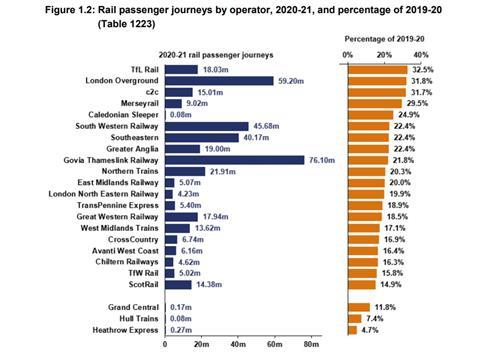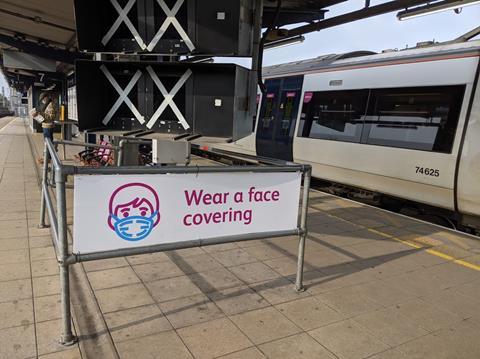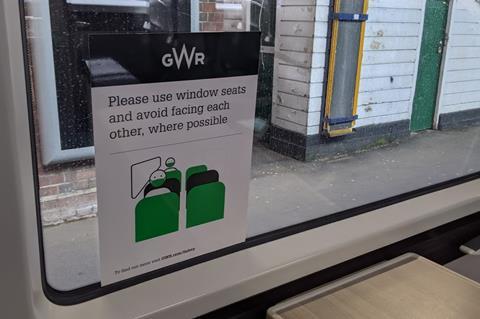
UK: Rail passenger journeys in Great Britain in 2020-21 were the lowest since records began in 1872, according to the latest statistics from the Office of Rail & Road.
The regulator said the ‘unprecedented’ fall in usage could be attributed entirely to the coronavirus pandemic, which had led to extensive government travel restrictions and instructions to work from home where possible.

In total, 388 million journeys were made from April 2020 to March 2021, equivalent to just 22% of the figure for 2019-20 and less than the 407 million recorded in 1872.
The distance travelled totalled 12·5 billion passenger-km, 18·7% of the previous year.
Operators providing services in and around urban areas recorded the greatest use, with London suburban operator TfL Rail (32·5%), inner-suburban operator London Overground (31·8%) and Essex to London commuter operator c2c (31·7%) being the only operators to record at least 30% of the journeys made in 2019-20.

Total passenger revenue was £1·9bn, down from £10·4bn in the previous financial year. The average revenue per franchised journey was £4·89, a real terms fall of 17·4% which ORR said could mostly be explained by the drop in the average journey length.
The ‘unprecedented’ fall in passenger numbers to the lowest total since the time series began ‘has clearly had an impact on both rail usage and ticketing revenue’, said ORR Director of Planning & Performance Graham Richards when the statistics were published on June 3.
‘Despite this, recent estimates published by the Department for Transport show that rail usage has recovered to around 45% of pre-Covid levels by the end of May 2021. ORR continues to work closely to support industry and help passengers back on to the railway safely.’

Commenting on the statistics, Robert Nisbet, Director of Nations & Regions at the Rail Delivery Group, said ‘despite plummeting passenger numbers during the last year, Britain’s trains have helped to keep key workers and people who cannot work from home on the move throughout the pandemic.
‘As restrictions are lifted, the rail industry, through our safer travel pledge, will welcome more people back to train travel and help to support the country’s economic recovery.’
| Ticket type usage in 2020-21 compared to 2019-20 | |
|---|---|
| Off-peak | 26·8% |
| Anytime/peak tickets | 25·0% |
| Advance | 20·9% |
| Season tickets | 15·9% |
| Other (rover, group and packages) | 35·8% |



